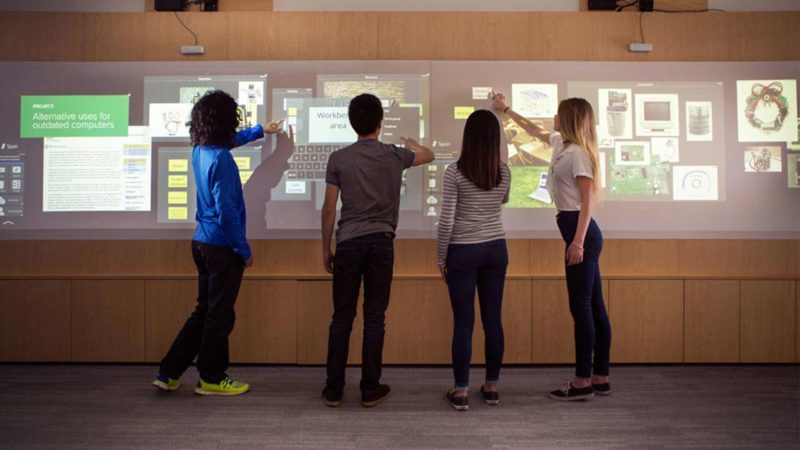
Technology transforms interactive lessons for university students
Digital technology brings great diversity to methods of teaching in universities for two simple reasons.
- Students are natural digital experts with technology dominating virtually every aspect of their daily lives.
- The accessibility of specially designed in-class technologies means that educators can harness their students’ inherent skills to help them learn.
Transforming teaching methods
Higher education teaching methods have undoubtedly been transformed by the digital world. New interactive learning pedagogies challenge students in different ways. Tutoring methods are less prescriptive with students being encouraged to learn independently rather than simply being spoon-fed information from the front of the class. And when universities focus on innovation and digital transformation, they inevitably deliver more interactive lessons that use technology to its full benefit.
The merits of interactive lectures and lessons are well documented. Through project-based and student-led learning, academic knowledge integrates with the development of ‘soft skills’ and, at university level, provides a better grounding for the working world.
What more can be done?
The question is, as the digital landscape continues to evolve, could universities do more to empower their students and modernise their teaching methods?
The latest digital collaboration solutions are an easy way forward as the familiar technology capitalises on the prolific use of BYOD and brings a fresh approach to collaborative, student-led learning. From a teaching perspective, digital technology helps tutors to create more interactive, engaging and flexible lessons that in turn encourage participation and teamwork.
Ground-breaking technology
One technology expert in this space, Nureva, has designed solutions specifically to support today’s collective style of learning. The company’s ground-breaking Span system is a visual collaboration solution providing a huge virtual canvas that encourages university students to interact and collaborate. Combining cloud-hosted software with ultra-wide projection based hardware, it allows immersive, seamless collaboration screens to be linked creating a new interactive environment. It’s a huge leap forward from a traditional tutor-led set-up with a screen or whiteboard at the front of a room.
Trends such as BYOD are used to their full advantage and all students can be invited to view and collaborate from their devices. And BYOD collaboration is supported in a secure way through the cloud, alleviating many of the security issues usually associated with students’ personal devices.
Any-time learning
For project-based and student-led learning, students can work independently or in small groups and can contribute to the canvas from any device at any time – not just when the lesson content is ‘live’ in the classroom. With an unlimited number of screen shares, multiple students and tutors can view and add to any part of the canvas without affecting what other users are doing. Link the screens together and you’ve created a large expanse of space – up to 60 metres wide – to enable students to develop different ideas and progress to be tracked and shown.
Using familiar tools
The Span system draws upon familiar, simple and flexible tools used in paper-based collaborative learning, such as sticky notes, sketches, images and flip charts. In collaborative learning, educators frequently rely on large workspaces with lots of pieces of written information. Span’s digital canvas retains all the flexibility that paper-based systems offer, while overcoming many of the deficiencies. By using the benefits of both mediums, for example, digital portfolios can be created for students by combining analogue and digital content and evidence.
Digital technology is fundamentally changing the way universities teach and students learn. For a generation born into a world with devices offering unrestricted access to knowledge and information, students expect the same level of interactivity and communication in a classroom. It makes sense to transfer the intuitive behaviour from using these devices into the learning environment.
Universities that invest in a sound digital strategy and the right technology can deliver interactive and collaborative lessons to students, maximising their potential and, hopefully, their final results.